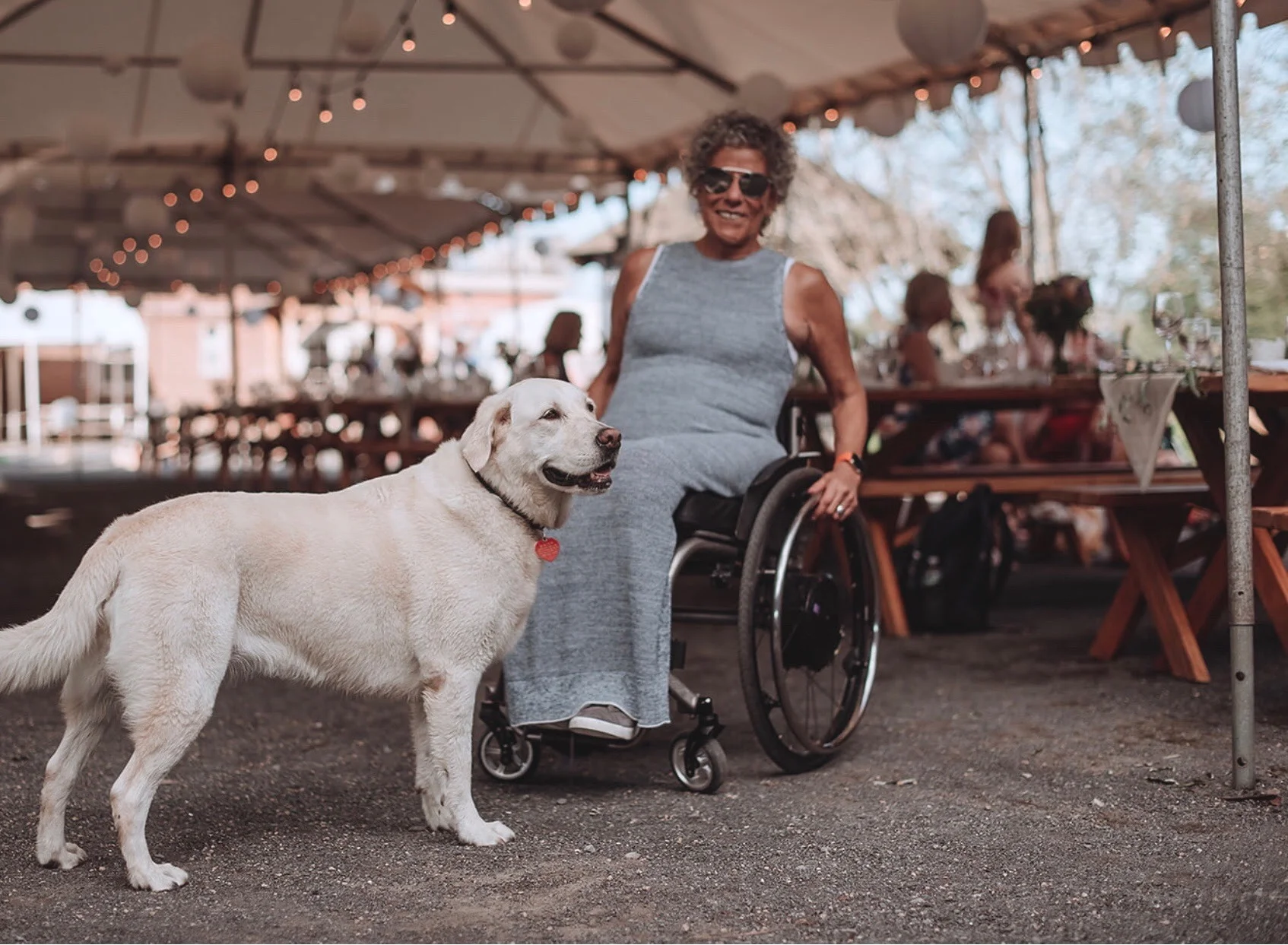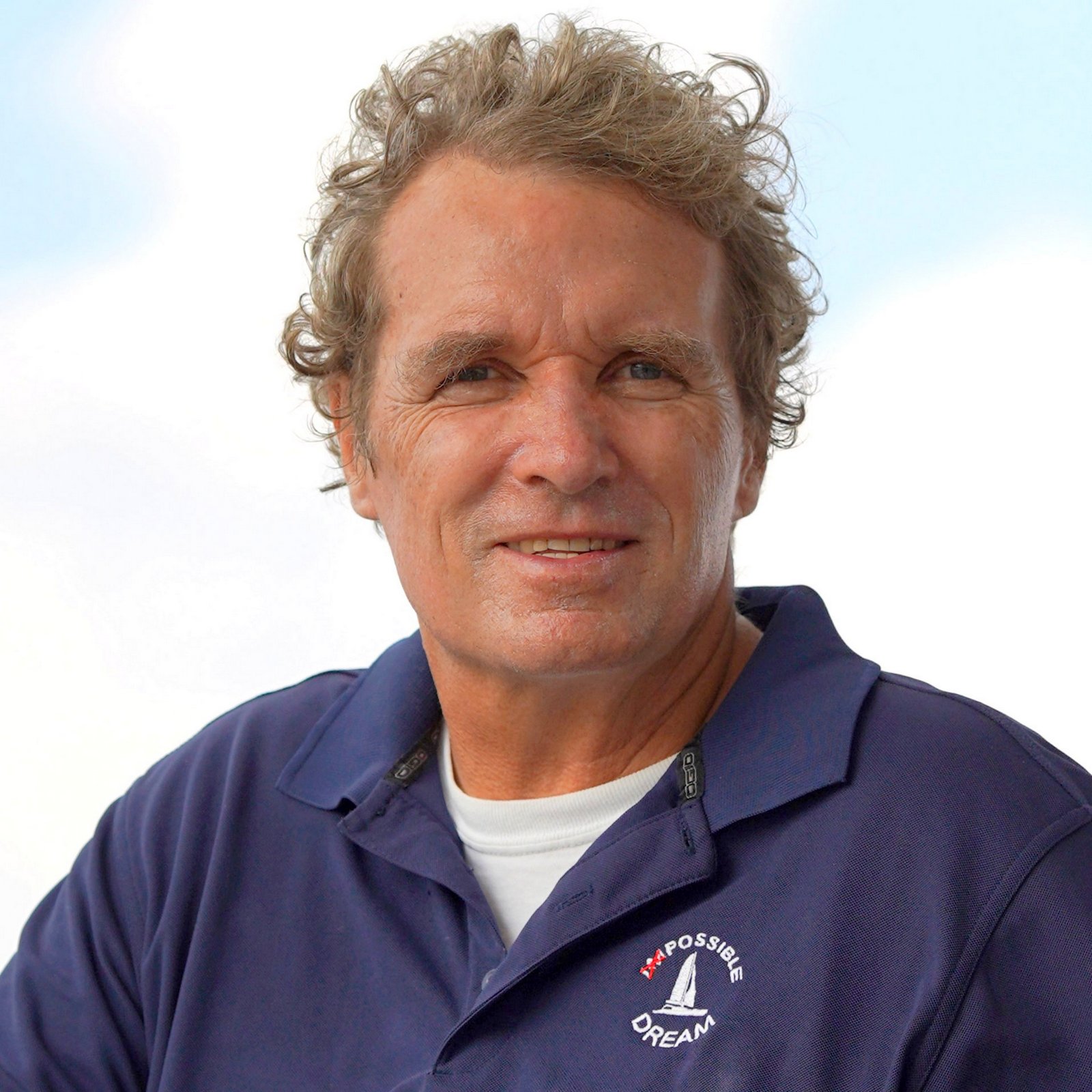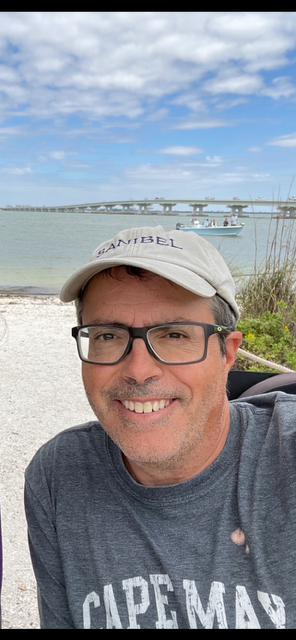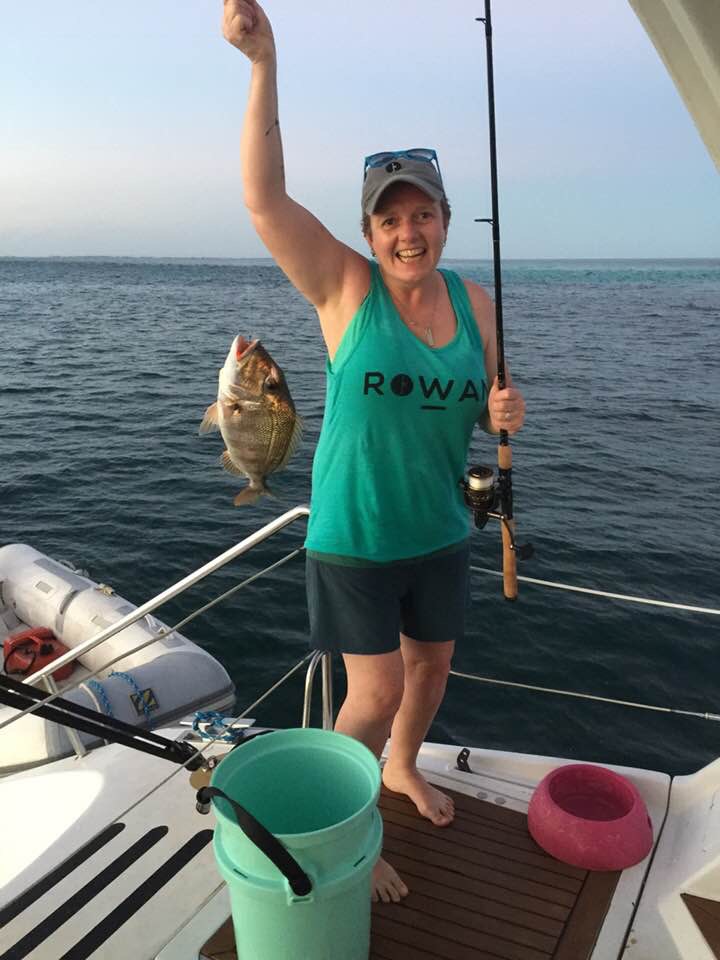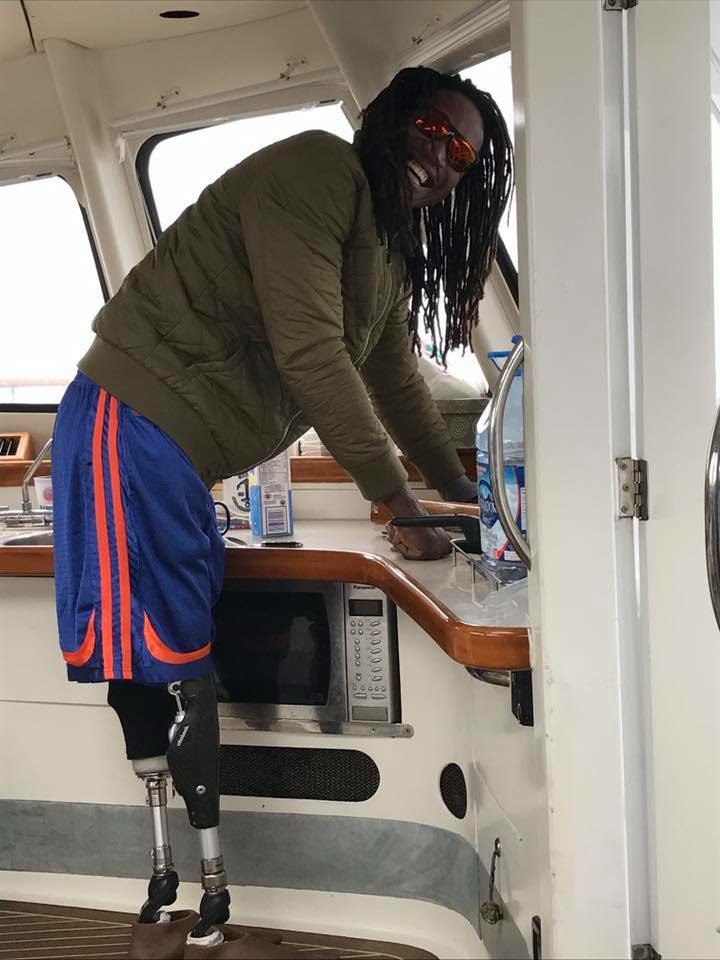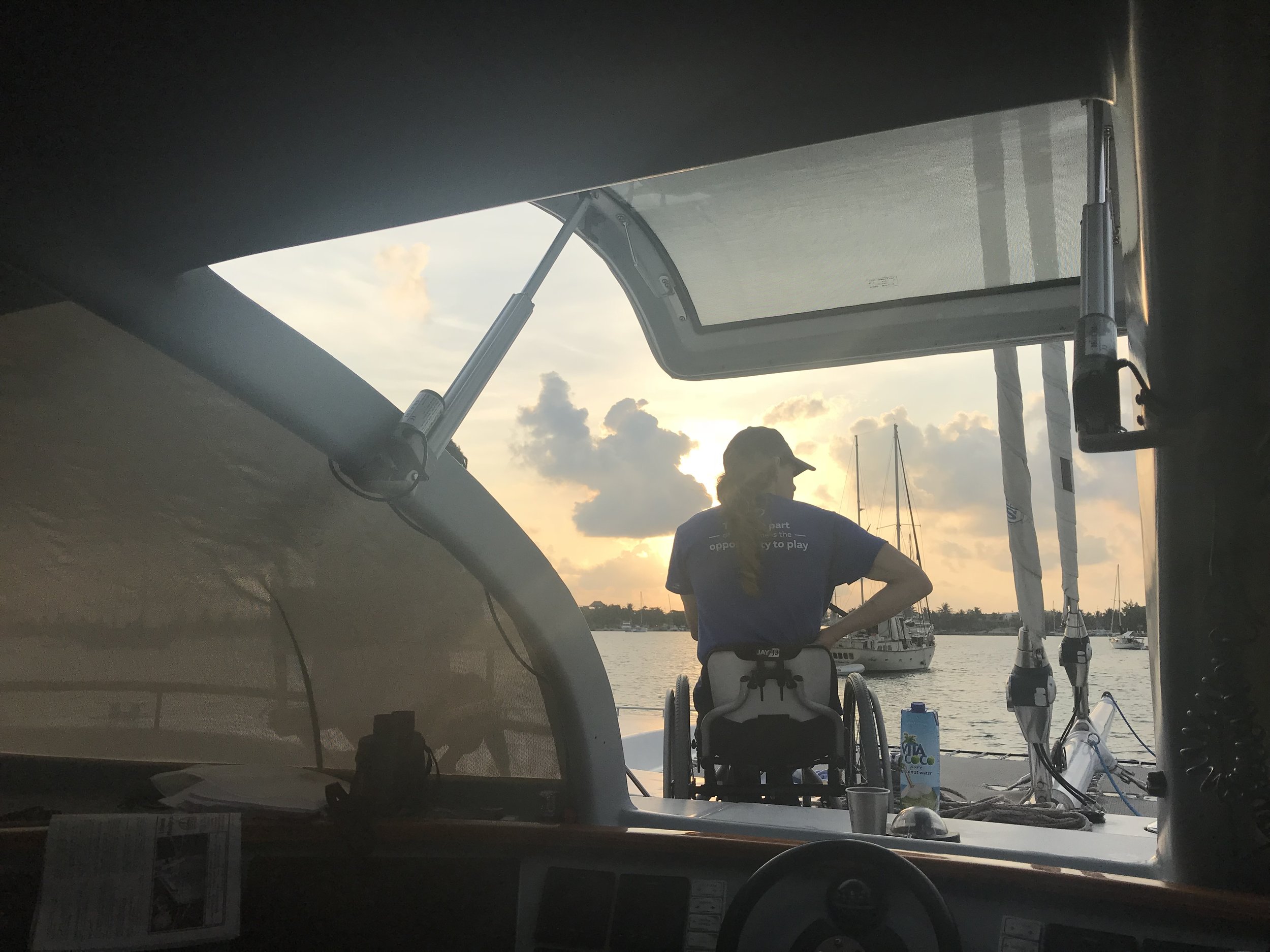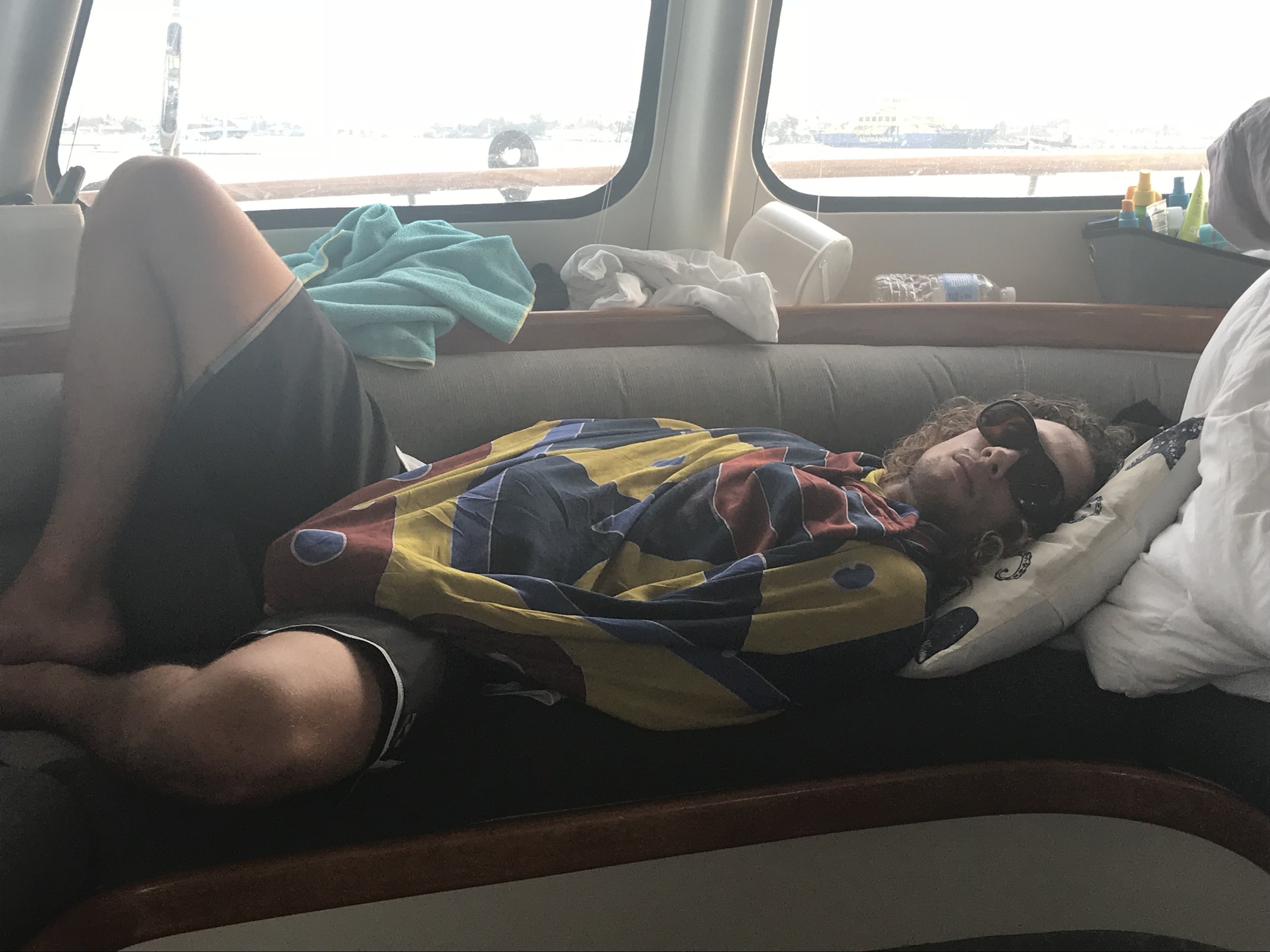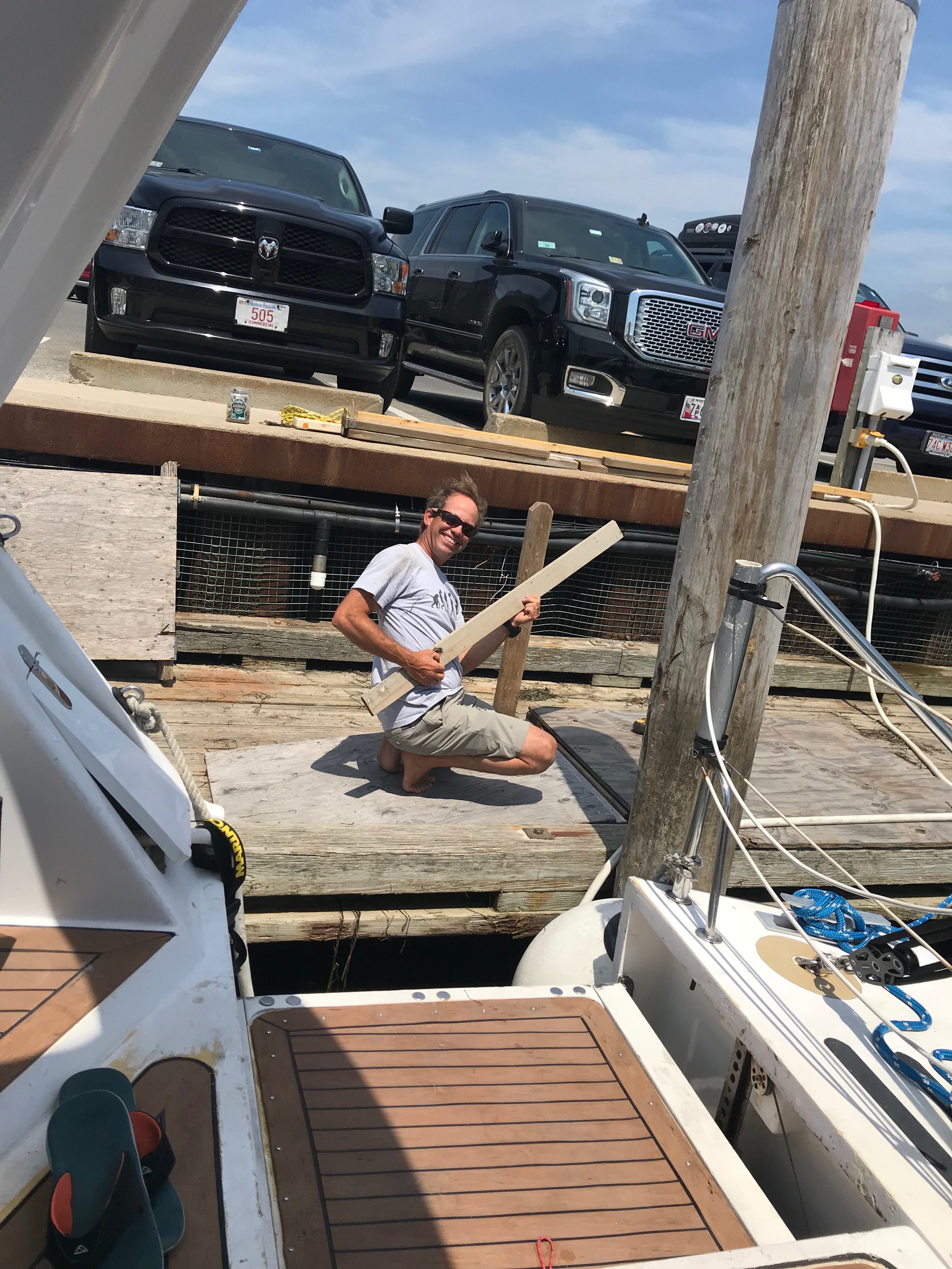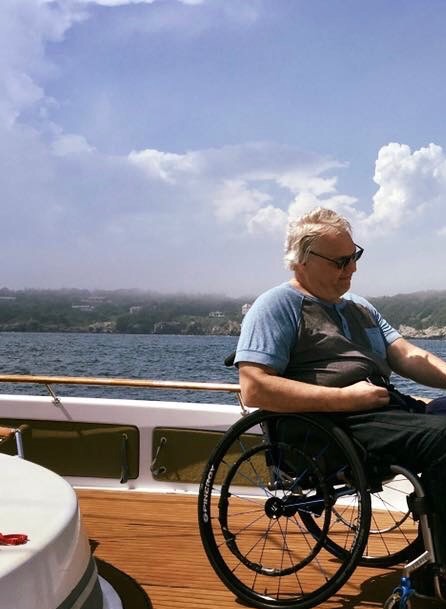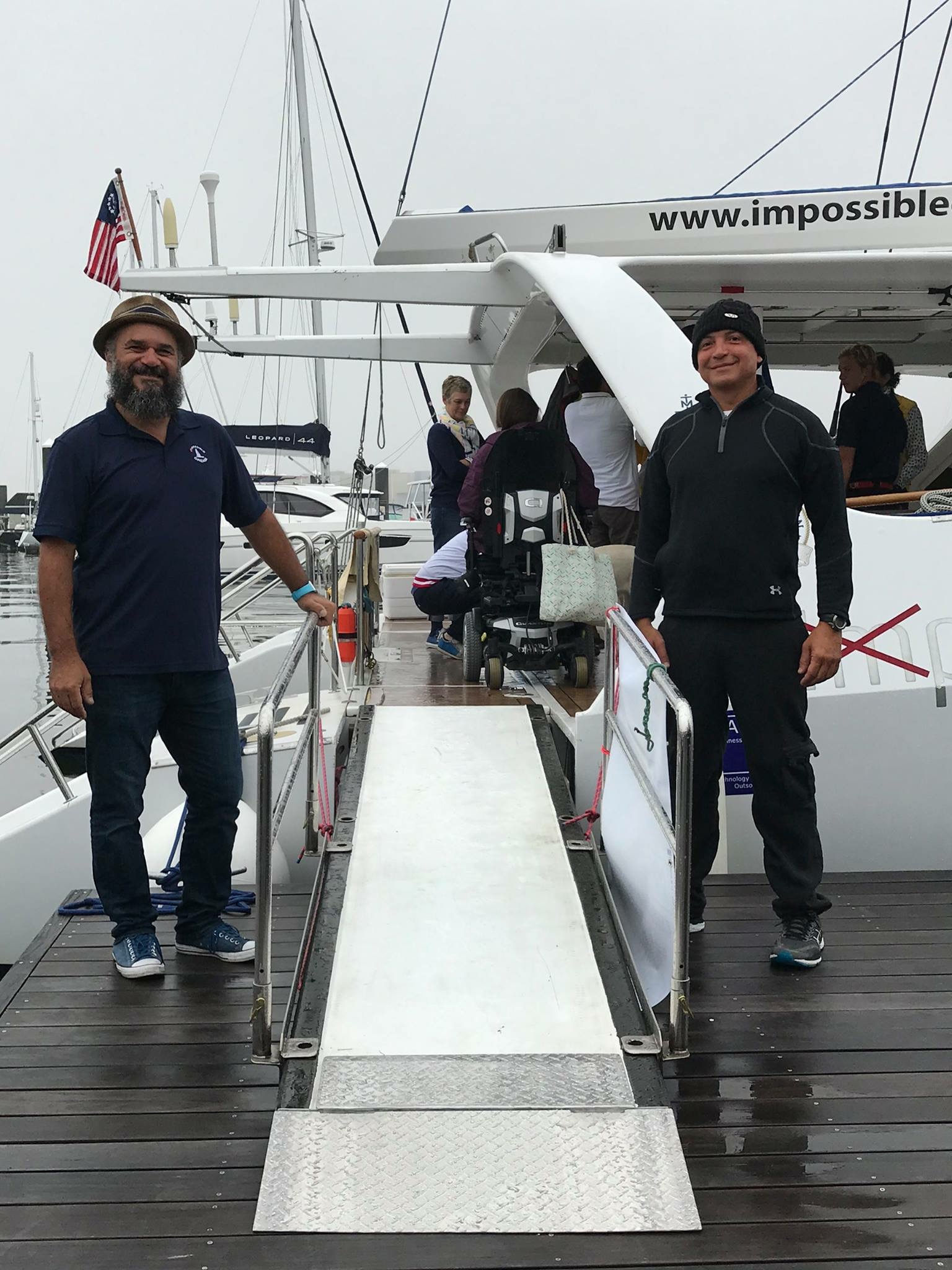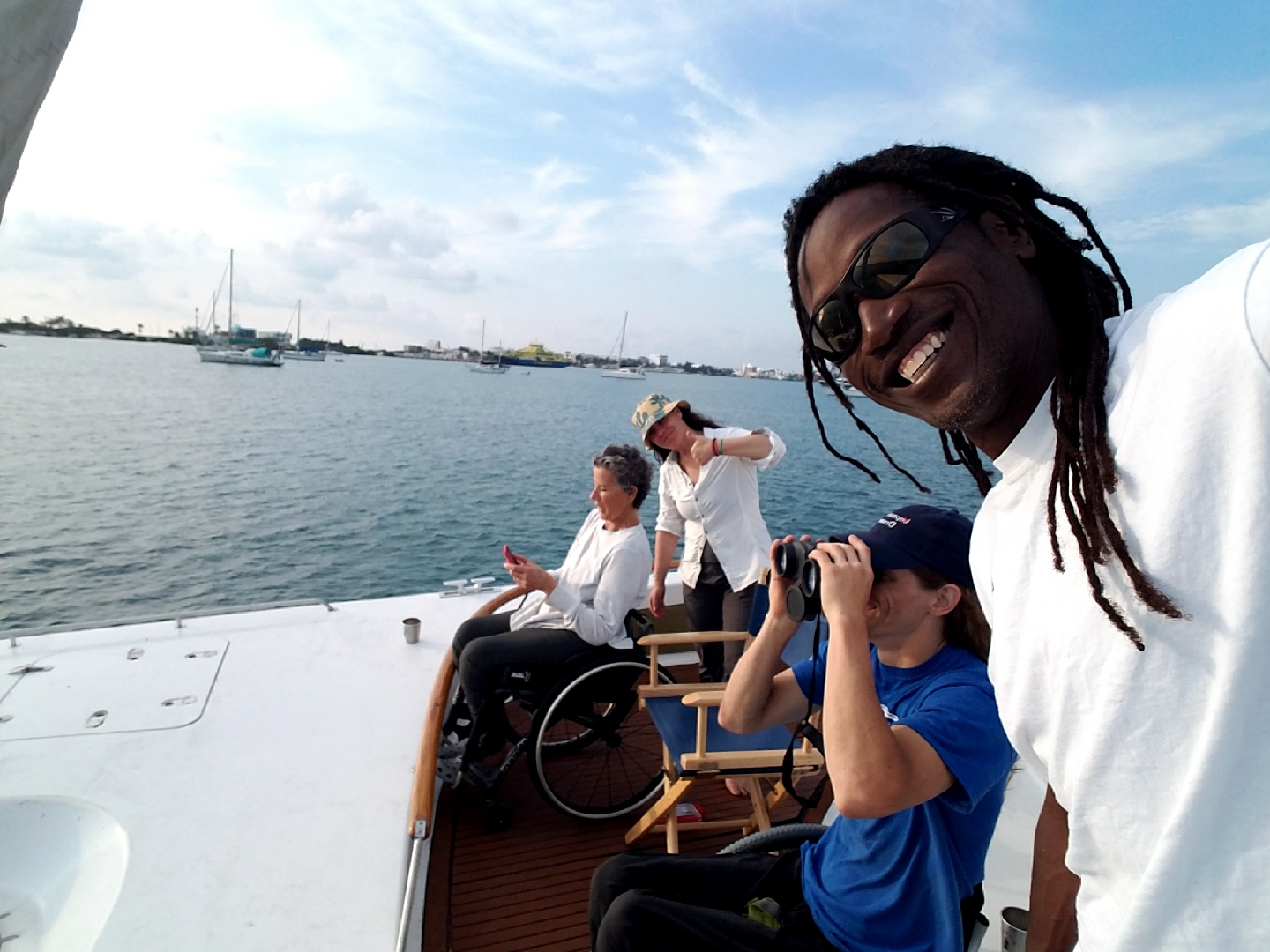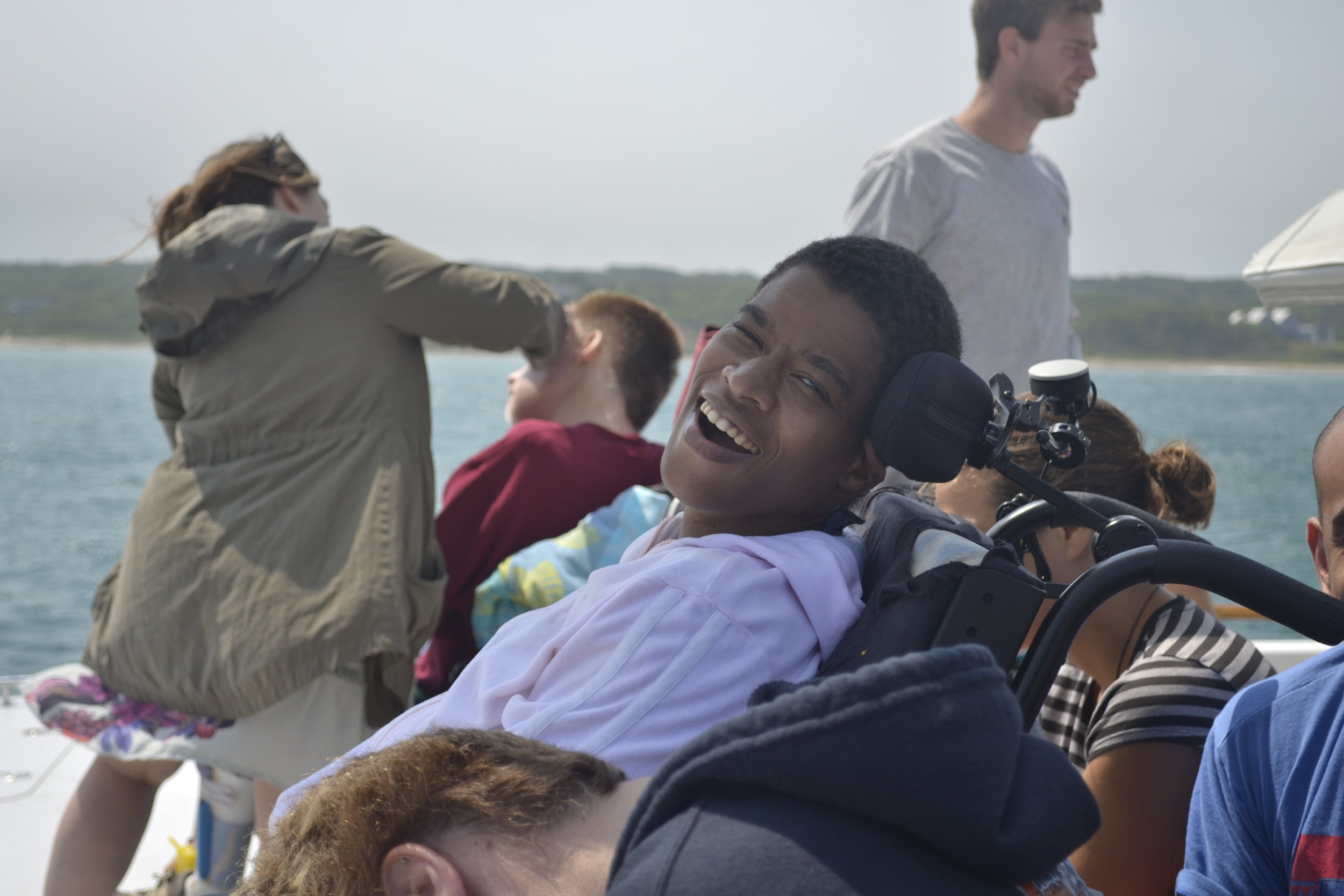
The Impossible Dream, a universally accessible catamaran, is dedicated to engaging the global community to raise awareness to barrier-free design and to inspire people with disabilities, wounded soldiers, disadvantaged youth, and their families to improve their independence and quality of life.
OUR STORY

The Impossible Dream is the world’s only catamaran built from the ground up to be fully universally accessible.
The Beginning
Impossible Dream was created by Mike Browne, a paraplegic who dreamed of a vessel that could sail the world’s oceans and be fully operational by a person in a wheelchair. She was designed by Nick Baily and built by Multi-Marine in 2002. Impossible Dream remains at the forefront of barrier-free sailboat design.
Mike Browne realized his dream with the construction of Impossible Dream and set sail on voyages that traversed the Atlantic and the waters of the Mediterranean.
Breaking Barriers
While under Mike Browne’s ownership, Geoff Holtz utilized Impossible Dream to become the first quadriplegic to sail across the Atlantic. Holtz sailed independently and was only accompanied by his personal care assistant. His record setting sail took place in 2010, breaking down barriers and inspiring others with disabilities.
After 10 years of sailing, Mike began to look for an organization to carry on his legacy and continuing the mission of the Impossible Dream.
Her New Mission
Deborah Mellen, an accomplished businesswoman, paraplegic, and sailing volunteer at Shake-A-Leg Miami saw a match. Yearning to share her love for sailing with others in the disability community, she funded the acquisition of Impossible Dream. Together with Harry Horgan the founder of Shake-A-Leg Miami, Deborah founded the non-profit Impossible Dream Inc. Under Deborah’s leadership, the Impossible Dream opened a new chapter in her historic life. She now travels the world creating access to the water for thousands of people with disabilities. A sail on the Dream is no longer impossible!
THE Boat
The world’s only purposely built barrier-free catamaran
Impossible Dream is an all-carbon-fibre, fast cruising yacht designed by Nic Bailey. She was created specifically for wheelchair users to sail independently and is easily handled, fast, comfortable and responsive. In the design process, the goal was to allow all aspects of sailing to be carried out by a sailor in a wheelchair. This includes: sail handling, docking, anchoring and maintenance.
Quick Stats
Designer: Nic Bailey
Builder: Multimarine
Year Built: 2002
Hull Type: Carbon Fiber Catamaran
Rig Type: Marconi Rig Sloop
LOA: 58’
Beam: 27’
Draft: 3.7’
Displacement: 15 Tons
Cabins: 4
Engines: 2 Volvo Penta D2-75/150S marine diesel engines
A Closer Look
The Racetrack
The primary concept of the boat is defined by the ‘racetrack’ which runs around the perimeter of the bridge deck house. It rises gently towards the bow, and is protected by a hollow bulwark that also provides stowage for fenders. This cardinal feature allows a sailor in a wheelchair to move freely from bow to stern around the boat. At the aft end, the bulwark widens out to provide an outside helm position on both sides of the stern.
The House
Typically, the boat is handled from inside the bridge deck house. This forward helm position is in front of the mast and behind a curved, laminated, toughened, solar reflecting glass, windscreen. Sailors can choose to stay in their own chair or transfer into one of the helm seats. These seats are mounted on a traveller track with the ability to lock into place. This enables them to traverse the width of the cockpit, giving the helmsman good access to all instruments as well as both primary winches, but preventing uncontrolled movement in bad weather.
Below Deck
The sleeping quarters and and heads are located below the bridge deck area and are identical on port and starboard hulls.
An internal lift in each hull enables full wheelchair access to the cabins and heads below deck. The two aft cabins are primarily designed for wheelchair use, with low ceilings and extra floor space for maneuvering and transfers. The two forward cabins, while also wheelchair accessible, have full standing headroom.
The Lifts
There are two internal lifts that provide wheelchair access below deck and two external lifts that allow for dockside access. The wheelchair lift mechanisms utilize standard track and traveller car components driven by a small hydraulic reel winch. The external lift platforms lie behind hinged hull panels which can rotate open when at the dock or be manually locked into place when underway. Additionally a gangplank can be secured to the hatches at the sides or the stern to allow for easy wheelchair access when boarding or disembarking.
Other Features
The bridge deck area and the outside ‘racetrack’ are on a single unobstructed level with no steps or door thresholds.
Impossible Dream has pivoting centerboards. Although these boards, with the associated casings and hydraulics, are not as efficient as daggerboards, the pivoting mechanism gives the added benefit of a safety release in the event of striking an underwater object.
The systems are run by a generator and battery banks with backup electrical supply via an alternator on the starboard engine.
Sail Trimming
Impossible Dream has three sails, the mainsail and two headsails. All sail trimming, engine controls and navigation functions can be carried out from the outside helms as well as the bridge deck helm. Sheets are lead through the coachroof to the bridge deck level where they go to hydraulic self-tailing winches. These are coupled with hydraulic headsail furling gear and hydraulic in-boom furling for the mainsail. The jib sails can be finely tuned by using hydraulic rams. the hydraulics systems do add considerable weight to the boat, but this is the hardware that enables the boat to carry a racing size rig area, and more importantly enable a sailor using a wheelchair to trim the sails, and thus really drive the boat, on their own.
The Dream Team
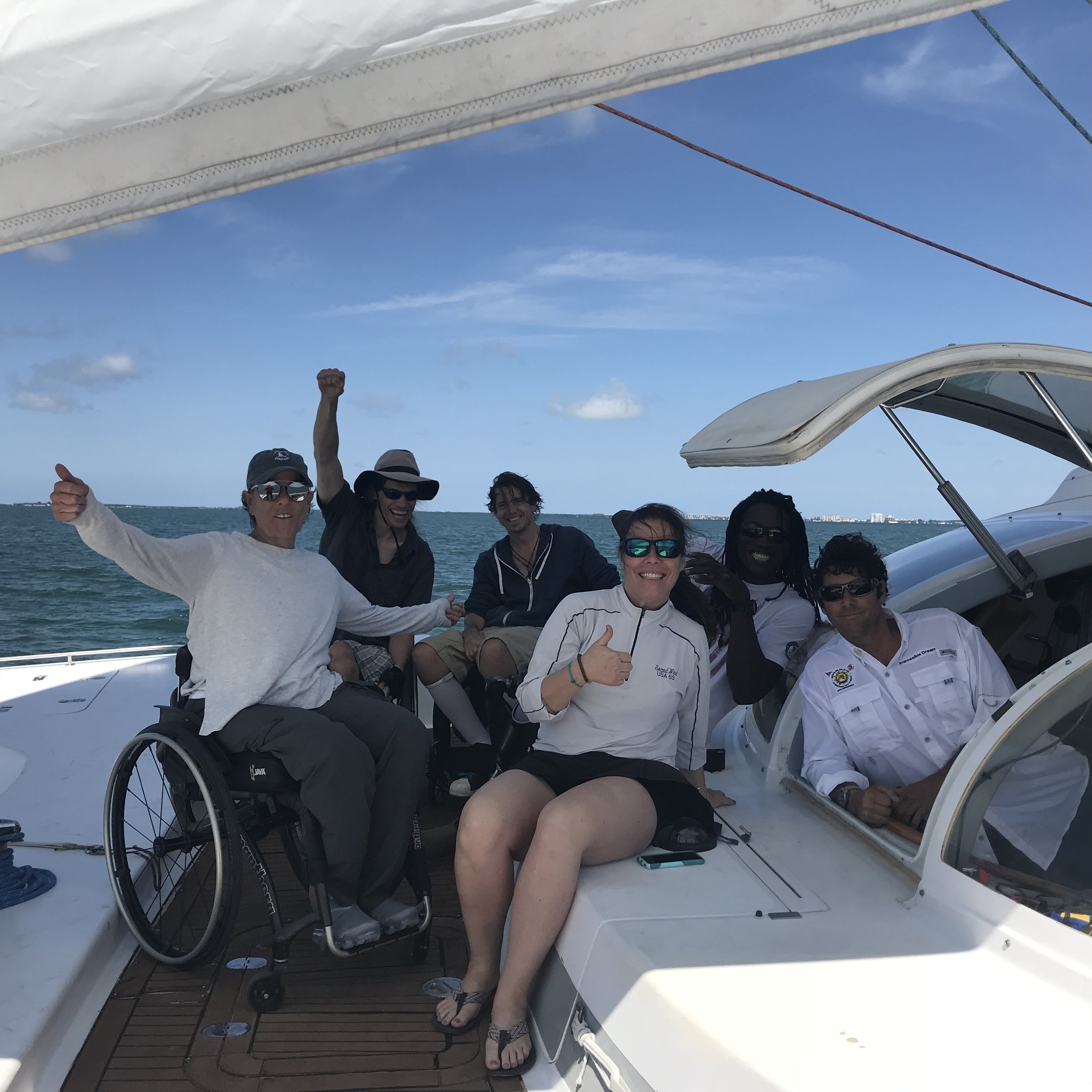
Meet the incredible team who make sailing the Dream a reality
Deborah Mellen
Founder and CEO
Harry Horgan
Cofounder
Will Rey
Captain
Mark Johnson
First Mate
Patrick LoDuca
Program Coordinator
David McCauley
Board Member
Past Crew
Since our start we have had the pleasure of having dozens of beautiful people of all abilities come aboard and crew on the Impossible Dream.
Alan Brown
Board Member
Photo Gallery




